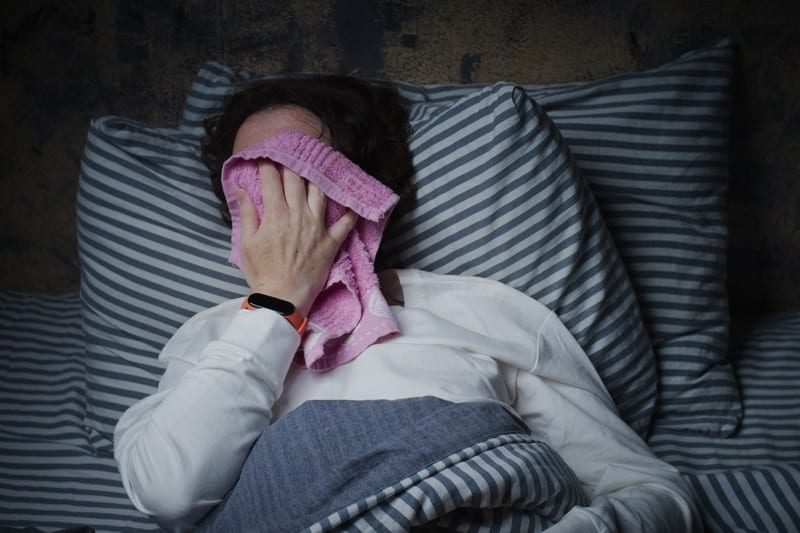Night Sweats

Night sweats or nocturnal hyperhidrosis are repeated episodes of extreme perspiration due to variations in body temperature at night. It is often related to underlying medical conditions ranging from perimenopausal and menopausal hot flashes to infections, cancer, obstructive sleep apnea, hyperthyroidism, and hypoglycemia. Night sweats, particularly those affecting localized body parts, sometimes result from certain medications and medical procedures.
Excessive sweating, particularly at night, also causes wrinkling and pruning of the skin, the kind that occurs after being in the water for a long time. It is also associated with low-grade fever, a systemic symptom of Hodgkin’s disease, endocarditis, and HIV, resulting from sudomotor dysfunction, unperceived elevations in body temperature, and minor febrile pulses.
Detecting the exact pathopsychological origins of the nocturnal thermoregulatory dysfunction is particularly relevant to plantar hyperhidrosis or sweaty feet diagnosis. The process involves the diagnosis of postganglionic sudomotor deficits in the small fiber neuropathies or the ganglia and distal axon of the postganglionic sudomotor sympathetic neuron via thermoregulatory sweat test, quantitative sudomotor axon reflex test, silicone impressions, or sympathetic skin response.










